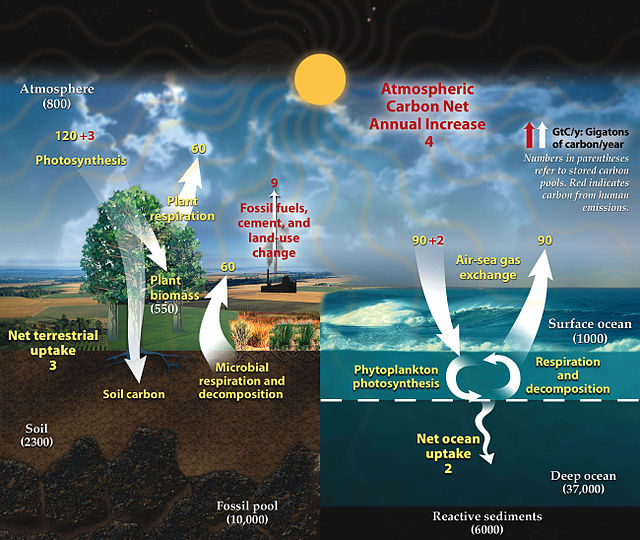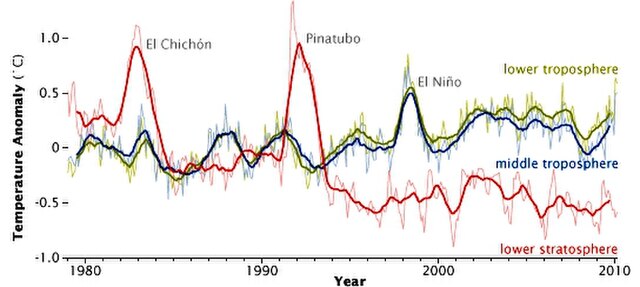Climate change feedbacks are processes in the climate system which amplify or diminish the effect of forces that initially cause the warming. Positive feedbacks enhance global warming while negative feedbacks weaken it. Feedbacks are important in the understanding of climate change because they play an important part in determining the sensitivity of the climate to warming forces. Climate forcings and feedbacks together determine how much and how fast the climate changes.
Methane climate feedbacks in natural ecosystems.
Nine probable scenarios of greenhouse gas emissions from permafrost thaw during the 21st century, which show a limited, moderate and intense CO2 and CH4 emission response to low, medium and high-emission Representative Concentration Pathways. The vertical bar uses emissions of selected large countries as a comparison: the right-hand side of the scale shows their cumulative emissions since the start of the Industrial Revolution, while the left-hand side shows each country's cumulative emissions for the rest of the 21st century if they remained unchanged from their 2019 levels.
Global warming caused by the potential disappearance of the four notable ice masses and their albedo, assuming an average warming level of 1.5 °C (2.7 °F) throughout. While mountain glaciers and summer Arctic sea ice can be lost in a century or two, total ice sheet loss requires multiple millennia.
Earth's climate system is a complex system with five interacting components: the atmosphere (air), the hydrosphere (water), the cryosphere, the lithosphere and the biosphere. Climate is the statistical characterization of the climate system. It represents the average weather, typically over a period of 30 years, and is determined by a combination of processes, such as ocean currents and wind patterns. Circulation in the atmosphere and oceans transports heat from the tropical regions to regions that receive less energy from the Sun. Solar radiation is the main driving force for this circulation. The water cycle also moves energy throughout the climate system. In addition, certain chemical elements are constantly moving between the components of the climate system. Two examples for these biochemical cycles are the carbon and nitrogen cycles.
The five components of the climate system all interact. They are the atmosphere, the hydrosphere, the cryosphere, the lithosphere and the biosphere.
Earth's atmospheric circulation is driven by the energy imbalance between the equator and the poles. It is further influenced by the rotation of Earth around its own axis.
Carbon is constantly transported between the different elements of the climate system: fixed by living creatures and transported through the ocean and atmosphere.
In atmospheric temperature from 1979 to 2010, determined by MSU NASA satellites, effects appear from aerosols released by major volcanic eruptions (El Chichón and Pinatubo). El Niño is a separate event, from ocean variability.







